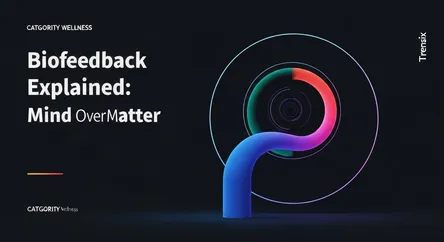Wellness
Biofeedback Explained: Mind Over Matter

Learn about biofeedback, a mind-body technique using technology to control involuntary bodily functions for improved health and wellness.
What is it?
Biofeedback is a mind-body therapy that teaches individuals to control bodily processes that are normally involuntary, such as heart rate, muscle tension, blood pressure, and skin temperature. During a session, a therapist attaches painless electrical sensors to your body to monitor these physiological signals. This information is then displayed on a screen in real-time, often through visual or auditory cues. This feedback loop allows you to see how your thoughts and emotions affect your body. A therapist guides you through relaxation and mental exercises to help you learn how to make subtle changes, like relaxing specific muscles or slowing your heart rate, to achieve a desired result. The ultimate goal is to be able to control these responses on your own, without the need for the equipment.
Why is it trending?
Biofeedback's popularity is rising due to a growing interest in holistic wellness and non-invasive, drug-free therapies. There is an increasing understanding of the mind-body connection, leading more people to seek out treatments that empower them to take an active role in their own health. The surge in wearable technology, such as smartwatches and fitness trackers that monitor metrics like heart rate variability and skin temperature, has also brought the principles of biofeedback into the mainstream. This technology makes it easier for individuals to track their physiological responses to stress and practice self-regulation techniques in their daily lives, driving further interest in formal biofeedback therapy.
How does it affect people?
By learning to influence their own physiology, people can gain significant control over their physical and mental health. Biofeedback is effectively used to manage a variety of conditions, particularly those exacerbated by stress. It has proven successful in treating chronic pain, migraines, anxiety, and insomnia by teaching users how to reduce muscle tension and calm the body's stress response. This process can lead to reduced symptoms, improved emotional regulation, and an enhanced sense of self-control and empowerment over one's own well-being. With practice, individuals can make lasting changes that improve their quality of life.